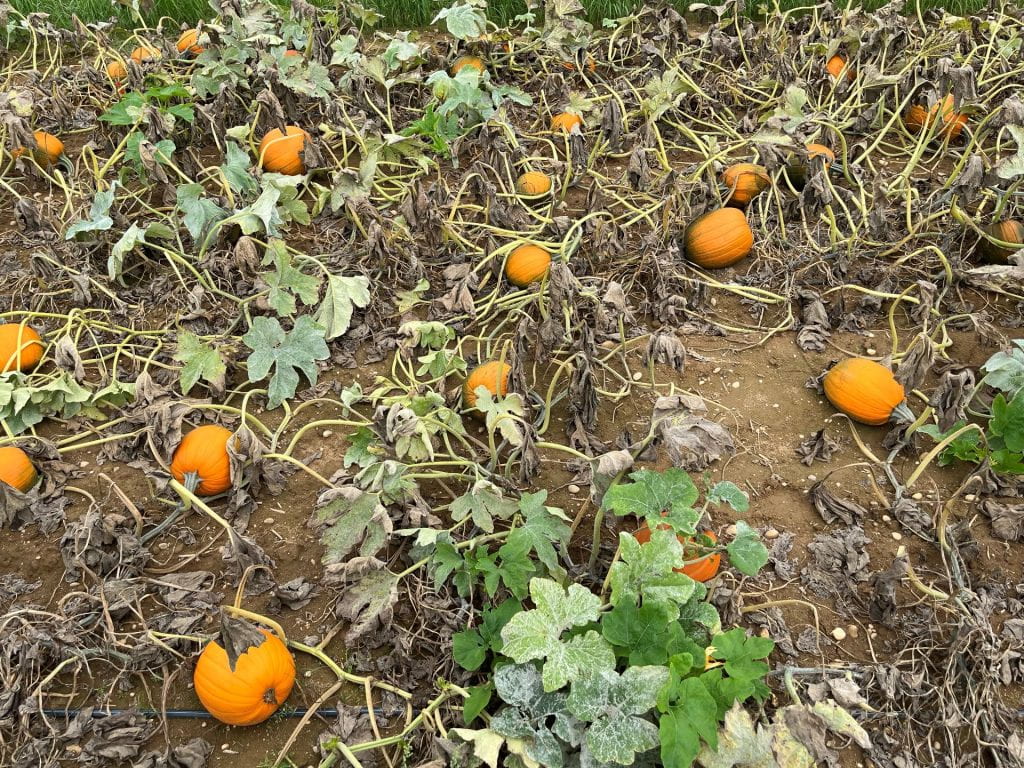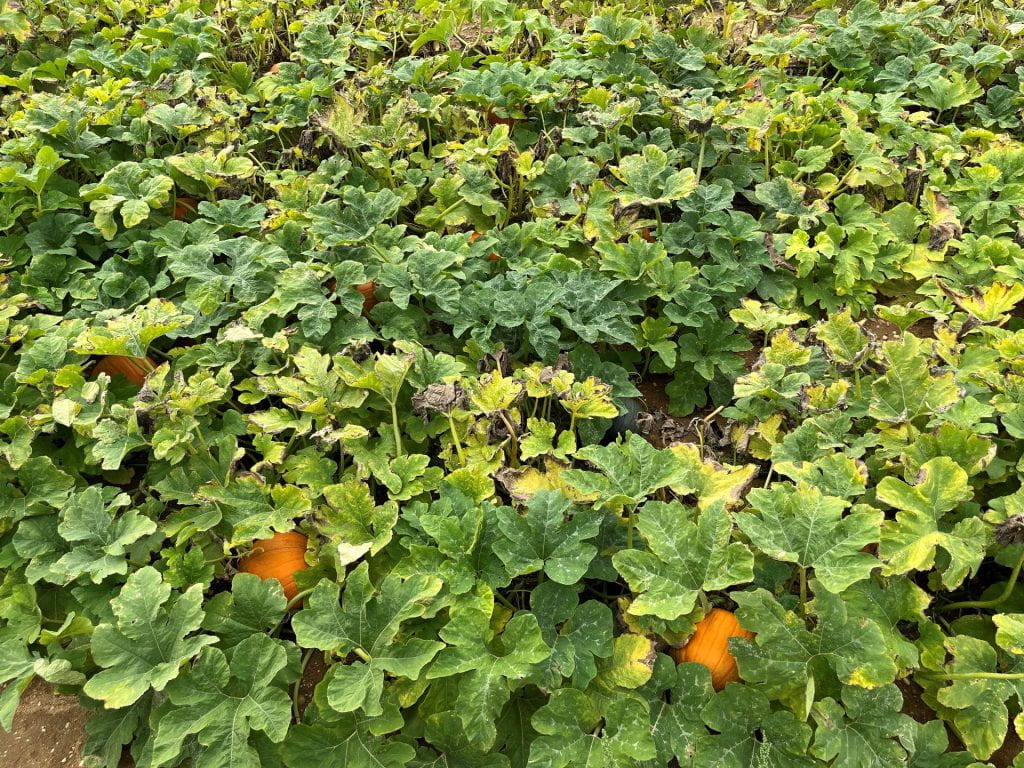Two fungicide efficacy experiments were conducted in 2022. In one experiment Cevya and Prolivo were tested applied weekly on a preventive schedule (started before symptoms seen) to a pumpkin variety with intermediate resistance (Bayhorse Gold). They provided 54% and 87% control on lower leaf surfaces, respectively, based on AUDPC values (summation of severity over the assessment period). In an adjacent experiment, with fungicide applications made on the same day to the susceptible pumpkin variety used in past experiments (Gold Challenger) and started after reaching the IPM action threshold of 1 out of 50 older leaves with powdery mildew, the recommended program of Vivando applied in alternation with Proline and Procure, which was included as the grower standard, provided 90% control.
Most treatments in these two experiments were biopesticides tested alone or in programs with conventional fungicides. See the Biopesticide Evaluations webpage for links to information about these treatments and photographs of those treatment plots.
The following photos were taken in the Bayhorse Gold experiment on 7 September, 7 days after the 7th application.
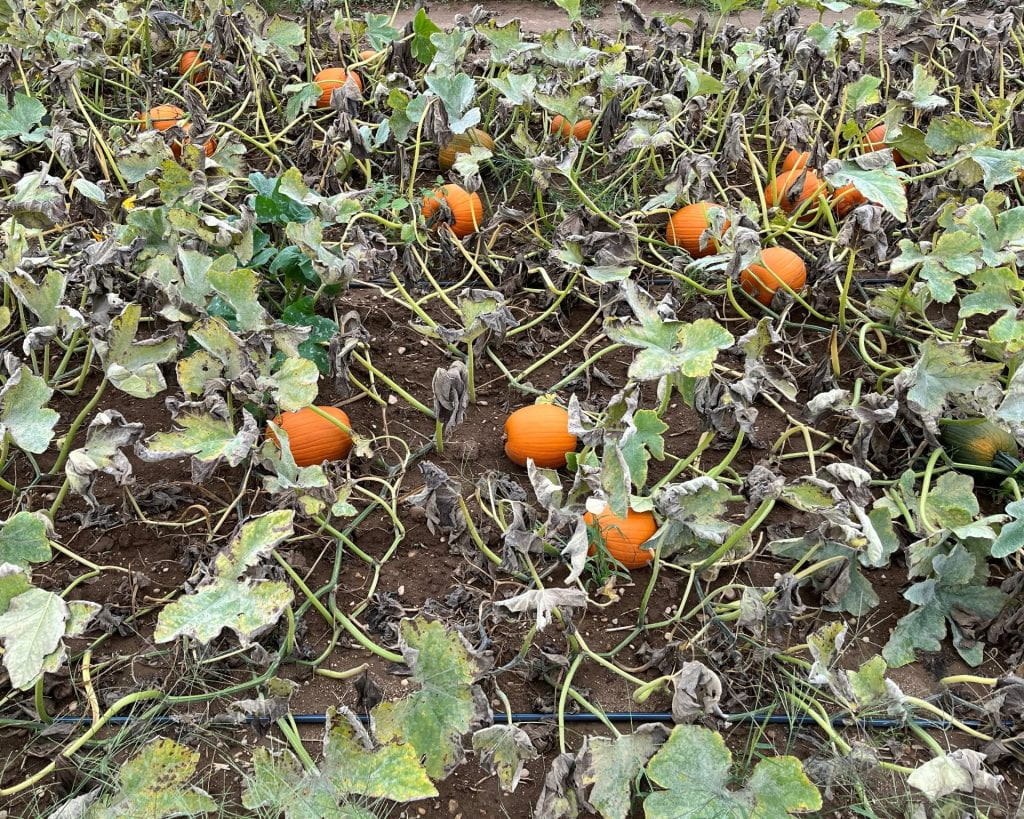
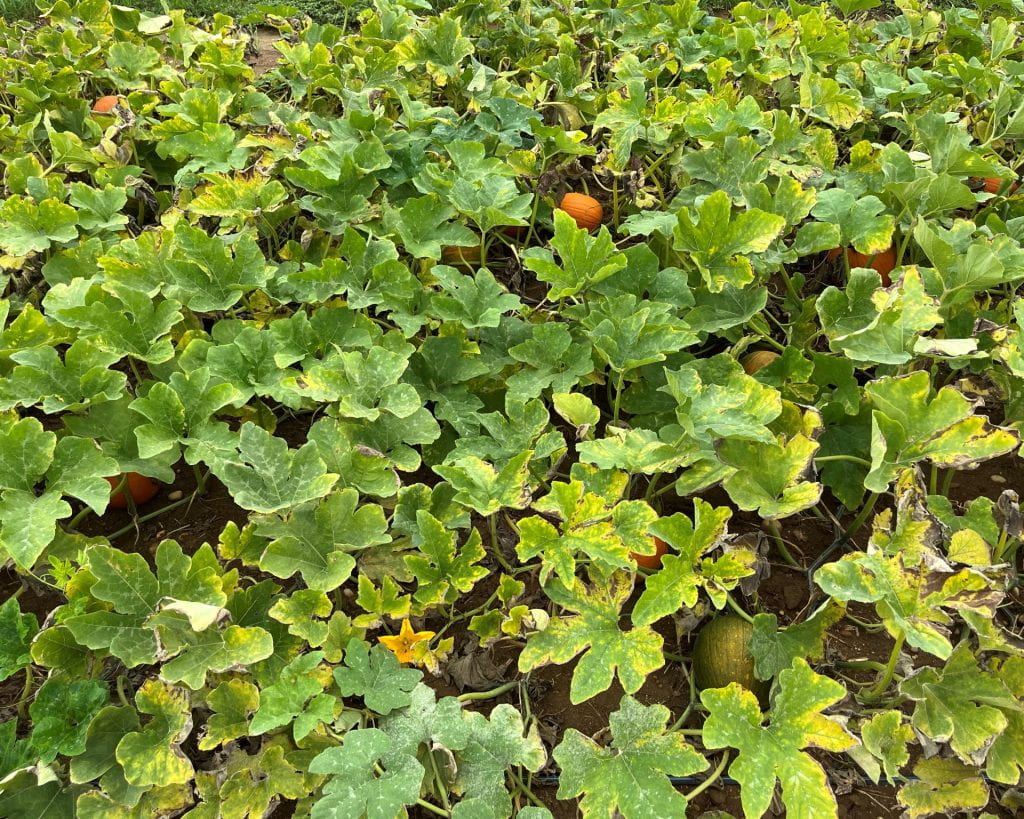
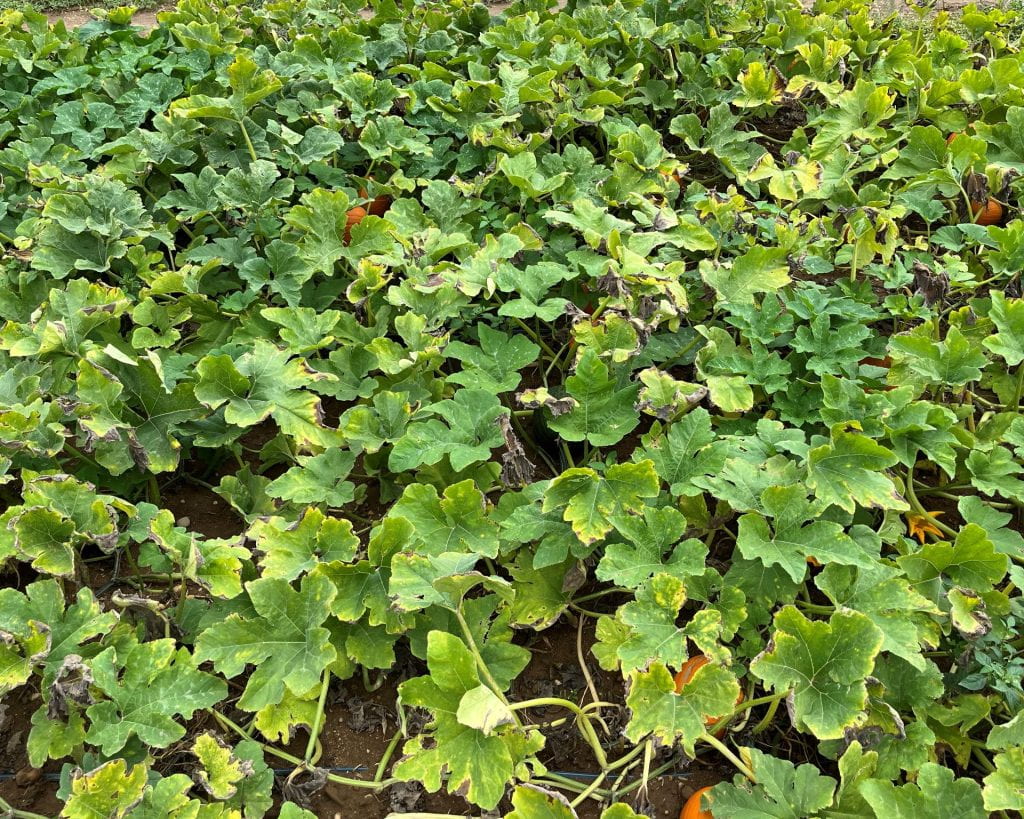
The following photos were taken in the Gold Challenger experiment on 7 September, 7 days after the 7th application.
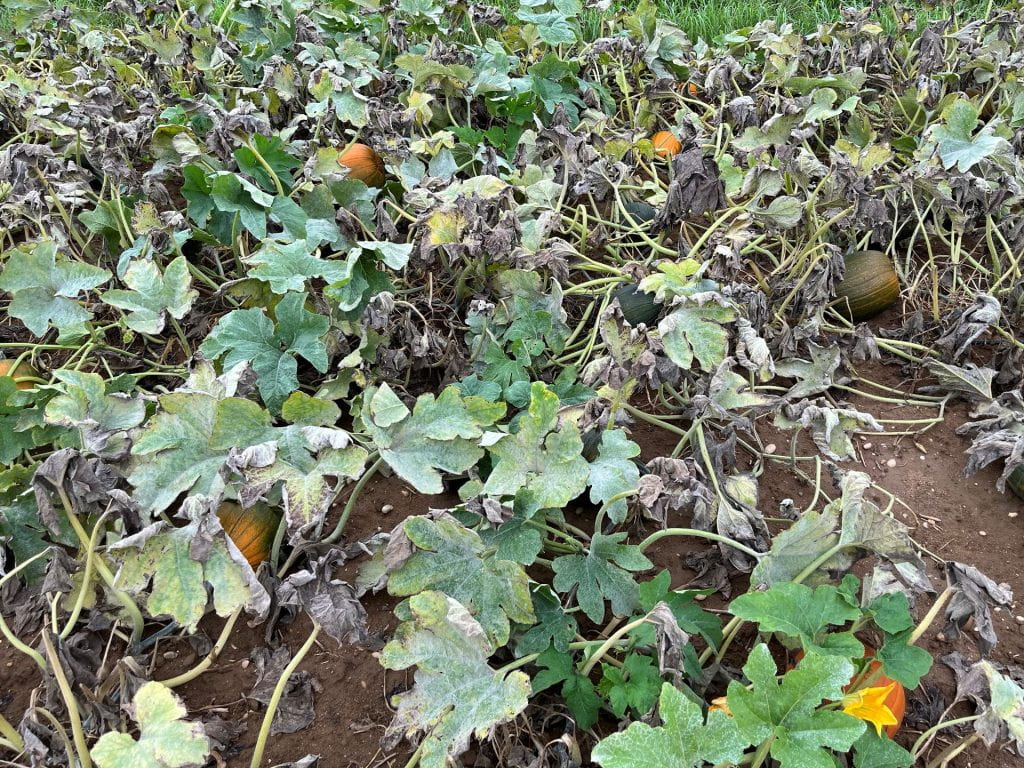
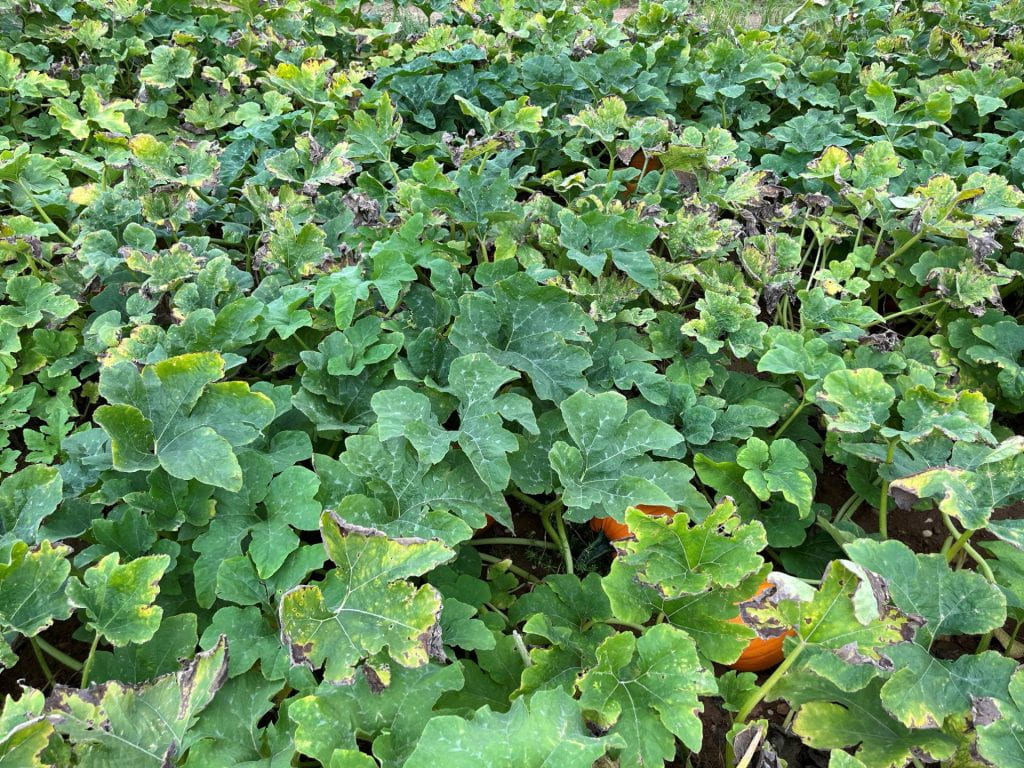
The following photos were taken in the Gold Challenger experiment in the same plots as above on 12 September, 3 days after the 8th (last) application.
